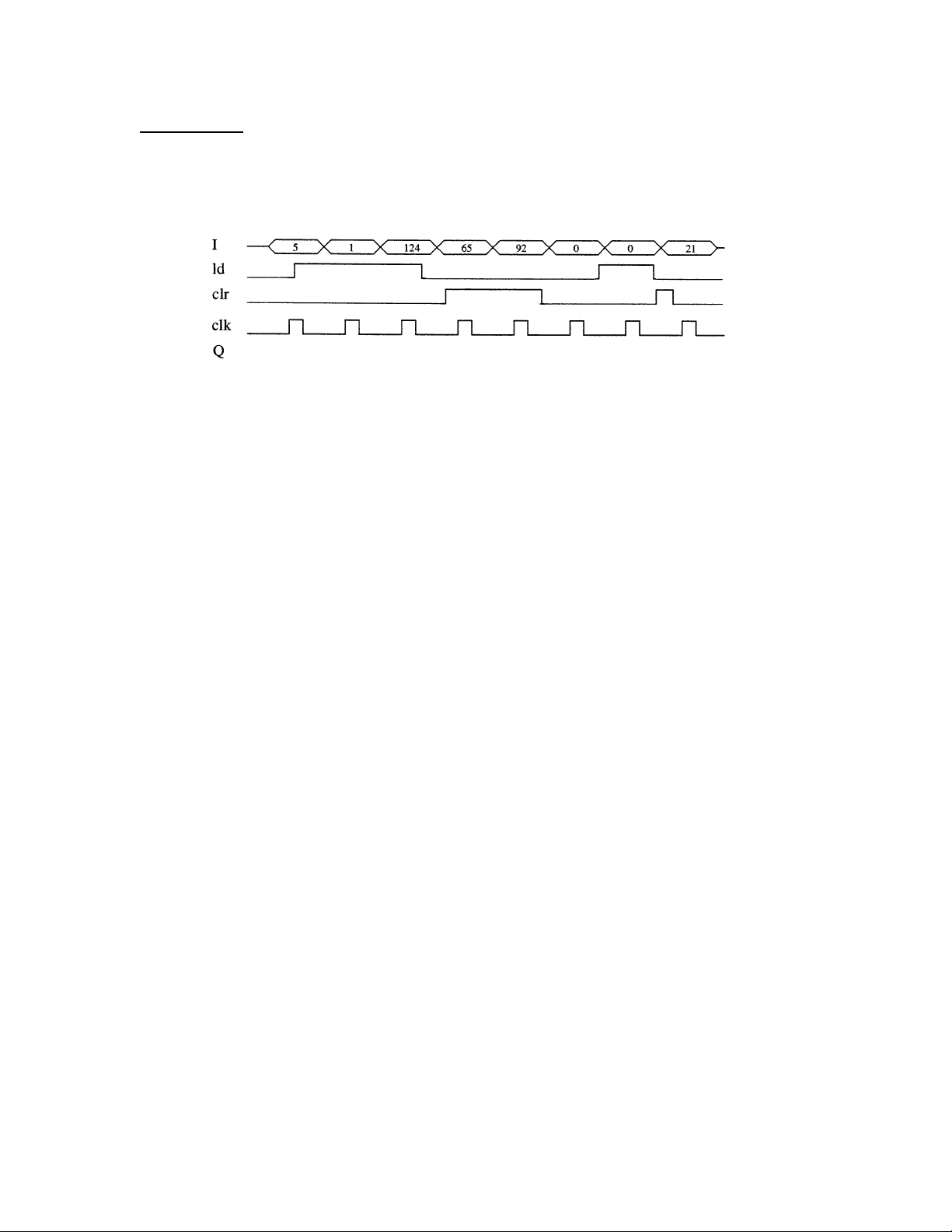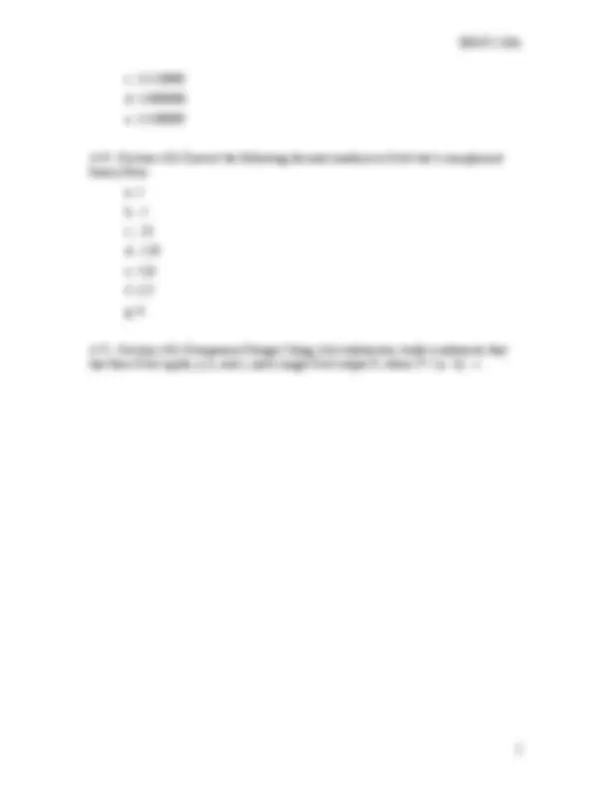



Study with the several resources on Docsity

Earn points by helping other students or get them with a premium plan


Prepare for your exams
Study with the several resources on Docsity

Earn points to download
Earn points by helping other students or get them with a premium plan
Community
Ask the community for help and clear up your study doubts
Discover the best universities in your country according to Docsity users
Free resources
Download our free guides on studying techniques, anxiety management strategies, and thesis advice from Docsity tutors
Various digital design questions from ee/cs 120a homework 3. The questions cover topics such as parallel load registers, register design, carry-ripple adders, adder design, circuit design for average output, up-counters, down-counters, and two's complement conversion. Students are required to complete timing diagrams, design registers, adders, and circuits, and perform two's complement conversions.
Typology: Assignments
1 / 2

This page cannot be seen from the preview
Don't miss anything!


Homework 3
4.2. (Section 4.2) Trace the behavior of an 8-bit parallel load register with input I, output Q, load control input ld , and clear input clr by completing the following timing diagram.
4.3. (Section 4.2) (Component Design) Design a 4-bit register with 2 control inputs s and s0, 4 data inputs I3, I2, I1 and I0, and 4 data outputs Q3, Q2, Q1 and Q0. When s1s0 = 00, the register maintains its value. When s1s0 = 01, the register loads I3…I0. When s1s0 = 10, the register clears itself to 0000. When s1s0 = 11, the register complements itself, so for example 0000 would become 1111, and 1010 would become
4.10. (Section 4.3) (Component Design) Design a 10-bit carry-ripple adder using 4-bit carry-ripple adders.
4.11. (Section 4.3) (Component Design) Design an adder that computes the sum of three 8-bit numbers.
4.17. (Section 4.4) (Component Use) Design a circuit that outputs the average of four 8- bit inputs (which are not in two’s complement form).
4.34. (Section 4.6) (Component Design) Design a 4-bit up-counter that has two control inputs: cnt enables counting up, while clear synchronously resets the counter to all 0s.
4.35. (Section 4.6) (Component Design) Design a 4-bit down-counter that has three control inputs: cnt enables counting up, clear synchronously resets the counter to all 0s, and set synchronously sets the counter to all 1s.
4.45. (Section 4.8) Convert the following two’s complement binary numbers to decimal numbers:
a. 11100000 b. 01111111
c. 11110000 d. 11000000 e. 11100000
4.47. (Section 4.8) Convert the following decimal numbers to 8-bit two’s complement binary form:
a. 2 b. - c. - d. - e. 126 f. 127 g. 0
4.51. (Section 4.8) (Component Design) Using 4-bit subtractors, build a subtractor that has three 8-bit inputs, a, b, and c, and a single 8-bit output F, where F = (a - b) - c.